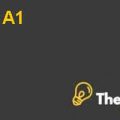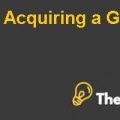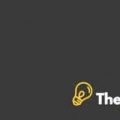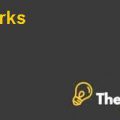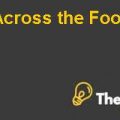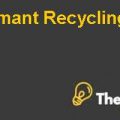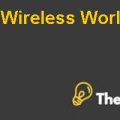
DIAGEO PLC Case Solution
Problem Statement
Diageo PLC is reevaluating its capital structure along with the restructuring of the business. The company is thinking to amend the leverage policies and take on additional debt. A Monte Carlo Simulation model has been formed by the treasury team to analyze the costs and the benefits associated with extra debt and achieving a trade-off between them. Based upon the optimal results of newly constructed simulation model, recommendations need to be made to the board on the most optimal capital structure for Diageo PLC.
Assignment Questions/Analysis
Question 1
1.1 Financing Decisions Faced by Firms Routinely
The financing decisions, which are routinely made by the management of the firms,are first of all related to the choice of short term or long term financing. Once this has been decided by the management they then move towards to make a choice of the financing alternatives available to the firm. Normally, firms have to raise the required financing through debt or equity and also they can use their internal generated funds.
Most of the firms make these decisions based upon the principles of the pecking order theory. Raising the funds is the second financing decision, the first and the most important financing decisions made by the firm are to identify the investment opportunities for which to raise the required funds. Along with this, the other financing decisions which are made by the managers in short term or routinely are capital structure management, interest coverage maintenance, credit rating maintenance and attaining optimal mix of debt and equity.
1.2 Historical Management of Diageo PLC capital structure
Before the merger of Guinness plc and Grand Metropolitan Plc, the management of Diageo Plc wanted to maintain EBITDA over total debt ratio of 30-35% and interest coverage ratios between 5-8 times and it was successful in achieving this low debt estimate. It had attempted to do this through the issuance of the debt in order to buy back the shares and in this way a return had been created which had covered all the costs of the operating along with the cost of the funds. After the merger had taken place, Diageo was rated a credit rating of A+ and thus it paid lower yields. The company also had the opportunity to borrow short term commercial paper and it did so by borrowing 47% of the total debt, which was in the form of short term commercial paper with 6 months to 1 year maturities.
1.3 Comparison of Diageo PLC capital structure with peers
Comparing the capital structure of Diageo with its peers based upon the EBITDA to total debt ratio, it could be seen that the peers of Diageo have higher ratios as compared to 35% ratio for Diageo. Therefore, the capital structure which was being maintained by Diageo was also considered as the most conservative capital structure as compared to the competitors in the market.
There were many competitors of Diageo however;the competitor with similar characteristics and market capitalization was Anheuser Busch. This company had 60% EBITDA over total debt ratio as compared to Diageo and this made is highly solvent. The return on assets and the return on equity of this company were also much higher at 24% and 34.5% respectively as compared to that of Diageo. This shows that there is a lot of room for making changes to the current financing mix of Diageo PLC..................
This is just a sample partial case solution. Please place the order on the website to order your own originally done case solution.

